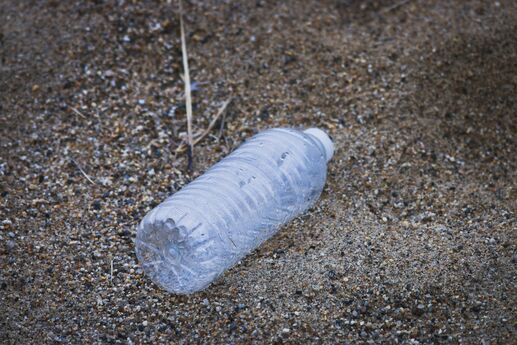What is rPET Plastic?
The plastic compound rPET or PET is a type of plastic used in manufacturing and other industrial processes. The 'r' in rPET stands for 'recycled', and PET stands for polyethylene terephthalate, which is a polymer of ethylene glycol and terephthalic acid. So for most people PET refers to plastic, which isn't a surprise since PET is the most common type of plastic resin. The most common use for rPET is in the manufacturing of plastic bottles for water and soft drinks and other containers.
How is PET Made?
To create virgin PET, producers extract crude petroleum and natural gas from the Earth, then process it into a molten liquid in plants with massive machines. There are machines that mix, inject, melt and form the pellets and resin that will eventually get spun into fibers and stretched to create a polyester fabric. This fabric then become anything from textiles, bedding, and bottles. which is then molded into plastic. For the manufacture of PET specifically designed for plastic bottles, an automated mixer combines PET pellets, with flakes of recycled PET. The process plastic loses some of its physical properties, so the recycled content can't exceed 10%. The PET drops from the mixer into a plastic injection machine that heats it to a scalding 315 degrees Celsius. The dry raw material melts into thick liquid plastic, and the machine then shoots it at high pressure into a mold. For the manufacture of PET designed specifically for plastic bottles, this plastic injection molding process casts pieces of plastic called pre-forms starter shapes that subsequent machines will transform into bottles or jars.The molded pre-forms harden almost instantly, thanks to a built in cooling system. These pre-forms are now on their way to becoming single serving plastic bottles.
How Does PET become rPET?
This is the tricky part, since using recycled plastic in the manufacturing of rPET require the public, consumer, businesses, municipalities and utilities to do their part. One of the great things about PET is that is easily recycled over and over for reuse. Once recycled, PET plastic makes it to the recycling plant where it is is sorted, shredded and heated and melted down into blocks, pellets or flakes. During this process, the raw PET passes through a number of machines that not only help to process the material, but also to remove unwanted, non-PET material like paper and metals. Other contaminants like glue and metals are removed before the broken down PET material can be washed and thoroughly, decontaminated, and sculpted into pellets, ready to be made into preforms, which eventually become rPET bottles.
Brands looking to appeal to younger, more environmental and sustainability oriented consumers have adopted marketing language emphasize the use of rPET in their packaging. Because so many plastic bottle get purchased every year, the bottled water brands are taking steps to educate current and potential customers with the most important rPET metric: percentage of recycled material in packaging. So, bottled water brands like to tout the percentage of rPET in their plastic bottles, and some even have special recycling programs to try and get recruit their consumers as participant with their efforts in create sustainable and carbon neutral packaging. Because of the additional costs associated with using recycled material, 30% rPET is considered good, while over 50% rPET is considered to be exceptional.
To learn more about recycling, rPET and PET, please visit the EPA website here.
Photo by Jonathan Chng on Unsplash


